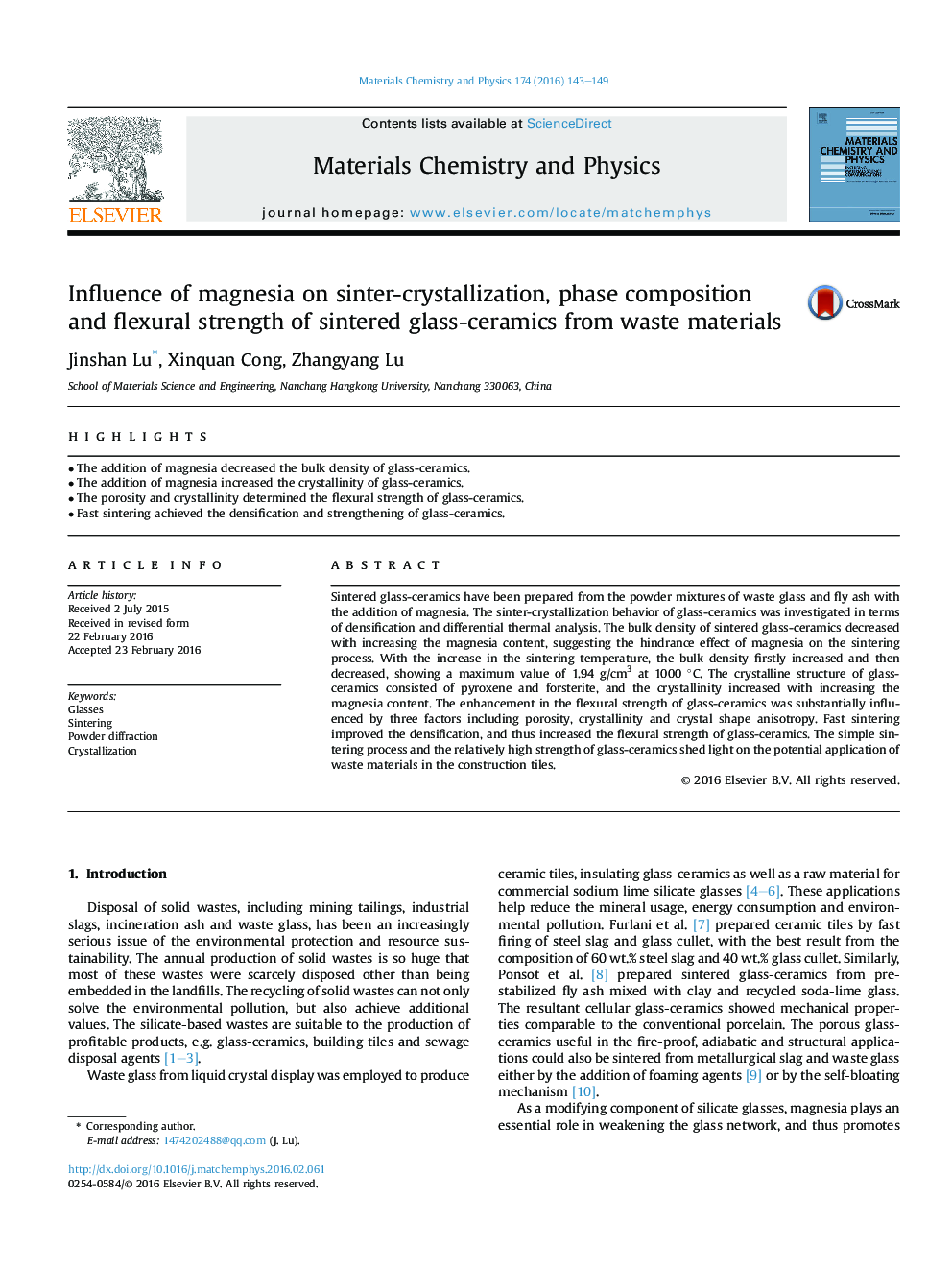| Article ID | Journal | Published Year | Pages | File Type |
|---|---|---|---|---|
| 1520785 | Materials Chemistry and Physics | 2016 | 7 Pages |
•The addition of magnesia decreased the bulk density of glass-ceramics.•The addition of magnesia increased the crystallinity of glass-ceramics.•The porosity and crystallinity determined the flexural strength of glass-ceramics.•Fast sintering achieved the densification and strengthening of glass-ceramics.
Sintered glass-ceramics have been prepared from the powder mixtures of waste glass and fly ash with the addition of magnesia. The sinter-crystallization behavior of glass-ceramics was investigated in terms of densification and differential thermal analysis. The bulk density of sintered glass-ceramics decreased with increasing the magnesia content, suggesting the hindrance effect of magnesia on the sintering process. With the increase in the sintering temperature, the bulk density firstly increased and then decreased, showing a maximum value of 1.94 g/cm3 at 1000 °C. The crystalline structure of glass-ceramics consisted of pyroxene and forsterite, and the crystallinity increased with increasing the magnesia content. The enhancement in the flexural strength of glass-ceramics was substantially influenced by three factors including porosity, crystallinity and crystal shape anisotropy. Fast sintering improved the densification, and thus increased the flexural strength of glass-ceramics. The simple sintering process and the relatively high strength of glass-ceramics shed light on the potential application of waste materials in the construction tiles.
